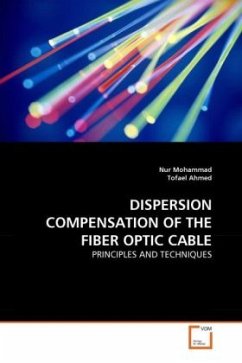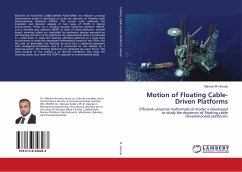The optical signals pass through a number of components such as optical fibers, filters, multiplexers and switches. These components increase the amount of total dispersion. Dispersion or pulse spreading of the optical signals is a problem which limits the bandwidth and length of the information carrying fiber. Therefore, it is important to control and characterize the dispersion. In this work, our target is to find and characterize the wavelength dependence dispersion and to see the effect of fiber Bragg grating (FBG) as a dispersion compensator. A 100 km single mode (SM) fiber optic link has been chosen. Laser diode has been chosen for light source. The channel achieve a BER = 10 -11 after propagating through the 100 km single-mode fiber.
Bitte wählen Sie Ihr Anliegen aus.
Rechnungen
Retourenschein anfordern
Bestellstatus
Storno








